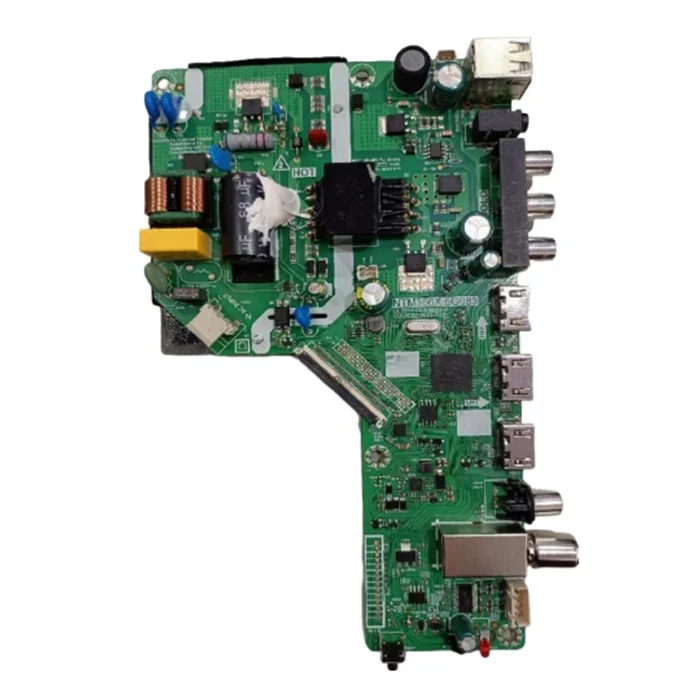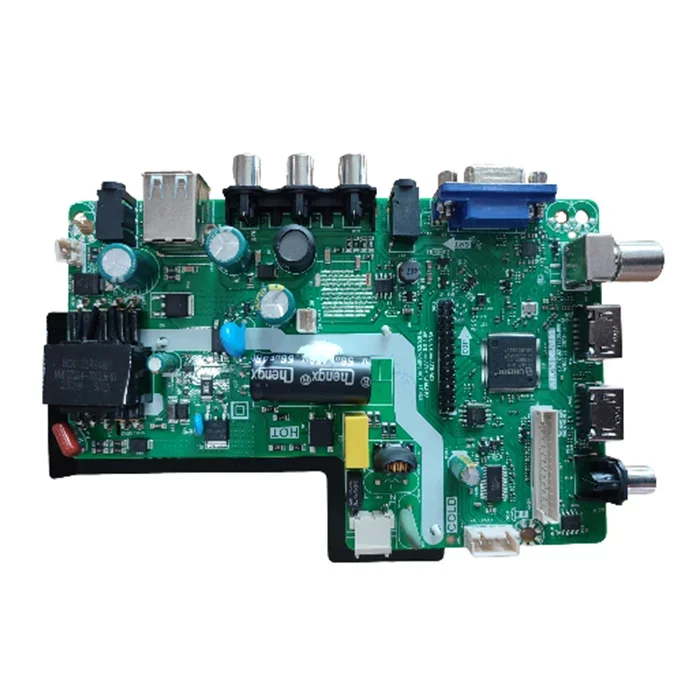Analog TV motherboards are complex electronic components that control the functions and performance of television sets. Like any electronic device, analog TV motherboards can encounter issues that affect their operation and functionality. Understanding common problems and troubleshooting techniques can help you resolve these issues and restore your TV's performance. In this article, we will explore the common issues faced by analog TV motherboards and provide helpful troubleshooting tips. Linked Vision Chip, a leading provider of advanced semiconductor solutions, offers valuable insights into resolving analog TV motherboard problems.
I. Common Issues with Analog TV Motherboards
1.No Power or Failure to Turn On:
One of the most common issues with analog TV motherboards is a complete lack of power or failure to turn on. This can be caused by various factors, including a faulty power supply, loose connections, or a malfunctioning motherboard. Additionally, issues with the main power switch or the power cord can also contribute to this problem.
No Audio or Distorted Sound:
Another common issue is the absence of audio or distorted sound. This can be caused by loose or damaged audio cables, problems with the audio processing circuitry on the motherboard, or issues with the speakers. Sometimes, incorrect audio settings or muted audio can also lead to this problem.
No Video or Poor Picture Quality:
Analog TV motherboards may experience issues with video output or poor picture quality. This can manifest as a blank screen, distorted images, color abnormalities, or flickering. Causes of this problem include faulty video cables, improper video settings, damaged video processing circuitry, or issues with the display panel.
Inconsistent Channel Reception:
Inconsistent channel reception is another common issue that can affect analog TV motherboards. This can result in channels dropping out, poor signal quality, or difficulty tuning into specific channels. Factors such as improper antenna alignment, weak signals, interference, or a malfunctioning tuner on the motherboard can contribute to this problem.
Unresponsive or Malfunctioning Remote Control:
An unresponsive or malfunctioning remote control can cause frustration when operating an analog TV. This issue may stem from a depleted battery, signal interference, a faulty infrared receiver on the motherboard, or remote control synchronization problems.

II. Troubleshooting Tips for Analog TV Motherboards
1.Power-related Issues:
Ensure that the power cord is securely connected to both the TV and the power outlet.
Confirm that the power outlet is functioning correctly by plugging in another device.
Check the main power switch on the TV and make sure it is turned on.
If the TV has a standby light, observe its behavior. If it remains off, there may be an issue with the power supply or motherboard, requiring professional assistance.
2.Audio-related Issues:
Check the audio cables and ensure they are securely connected to the TV and any external audio devices.
Verify that the audio settings on the TV are correctly configured. Adjust the volume and ensure it is not muted.
Try connecting headphones or external speakers to determine if the issue lies with the TV's built-in speakers.
If the problem persists, consult a technician to diagnose and repair any internal audio circuitry or component issues.
3.Video-related Issues:
Inspect the video cables, ensuring they are properly connected to the TV and any external video devices.
Adjust the video settings on the TV, including brightness, contrast, and color levels, to optimize picture quality.
If the TV has multiple video inputs, test different inputs to determine if the problem is specific to a particular input or signal source.
If the issue persists, consider professional assistance for diagnosing and resolving any internal video processing or display panel problems.
4.Channel Reception Issues:
Check the antenna connections and ensure they are secure. Adjust the antenna position or orientation for optimal signal reception.
Rescan for channels on the TV to ensure all available channels are detected and tuned properly.
Consider using a signal amplifier or external antenna if you are in an area with weak or distant signals.
If the problem persists, consult a professional to inspect the tuner and antenna circuitry on the motherboard.
5.Remote Control Issues:
Replace the batteries in the remote control and ensure they are correctly inserted.
Check for any obstructions between the remote control and the TV, as well as any sources of interference such as other electronic devices.
Try re-syncing the remote control with the TV according to the manufacturer's instructions.
If the remote control continues to malfunction, consider purchasing a replacement or using a universal remote control compatible with your TV.

III. Linked Vision Chip: Enhancing Analog TV Motherboard Performance
Linked Vision Chip is dedicated to advancing the performance and reliability of analog TV motherboards. With their expertise in semiconductor solutions, they contribute to the development of high-quality components that minimize common issues and maximize TV performance. By partnering with Linked Vision Chip, you can ensure the longevity and optimal functionality of your analog TV motherboard.
Conclusion
Understanding the common issues encountered by analog TV motherboards and implementingtroubleshooting tips can help you address and resolve these problems effectively. Power-related issues, audio and video problems, channel reception issues, and remote control malfunctions are some of the common challenges you may face. By following the troubleshooting tips provided and seeking professional assistance when necessary, you can restore the performance of your analog TV motherboard. Linked Vision Chip's commitment to enhancing analog TV motherboard technologies ensures that their solutions contribute to a seamless viewing experience.


